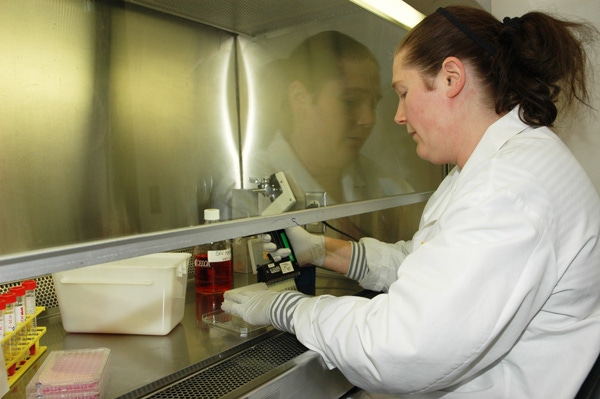Studies at Iowa State University (ISU) evaluated the best ways to characterize fiber from corn co-products in order to determine the site of digestion in the pig and better understand its potential contribution to energy.The trials also evaluated the impact of including fiber from corn on growth performance and on the digestion and utilization of energy and nutrients in the diet.
March 7, 2013

Studies at Iowa State University (ISU) evaluated the best ways to characterize fiber from corn co-products in order to determine the site of digestion in the pig and better understand its potential contribution to energy.
The trials also evaluated the impact of including fiber from corn on growth performance and on the digestion and utilization of energy and nutrients in the diet.
Researchers conducted two metabolism trials using 35 cannulated growing pigs and two growth studies using 70 grow-finish pigs.
In the first metabolism trial, researchers evaluated the digestibility of fiber, energy and nutrients in nine corn
co-products.
Like what you're reading? Subscribe to the National Hog Farmer Weekly Preview newsletter and get the latest news delivered right to your inbox every Monday!
A second metabolism trial evaluated the effects of increasing the fiber content in the diet on the digestibility of fiber, energy and various nutrients.
The use of cannulated pigs helped researchers determine where the fiber, energy and other nutrients were digested.
The two growth trials were conducted in grow-finish pigs using corn bran to increase the fiber content of a corn-soy diet and included fat to keep the energy levels of the diet constant, to measure growth performance and digestibility of energy (Table 1).

It is believed that the digestibility of fiber is greater in distiller’s dried grains with solubles (DDGS) than in corn, suggesting that fiber digestibility is improved by processing or fermentation at the ethanol plant.
ISU results indicated, however, that because of its components, fiber in corn co-products is more resistant to microbial fermentation.
Results also indicated that increasing the fiber level in the diet with corn fiber, as is possible with DDGS, decreases the digestibility of energy, fiber and nutrients in the diet.
Fat compensated for the reduction in energy when fiber was increased. The high-fat content in DDGS cancels the negative effects of increased fiber in the diet.
Production of lower fat varieties of DDGS, however, may decrease the digestibility of energy and nutrients in the diet even further, and decrease the net energy.
It is important to note that about half of the fiber from corn co-products escapes fermentation in the digestive tract of the pig.
Industrial processes leading to the improvement of fiber digestibility of corn co-products are a good alternative to better utilize the energy trapped in the fiber matrix.
Researchers: John Patience and Nestor A. Gutierrez, Iowa State University. For more information, contact Patience by phone (515) 294-5132, fax (515) 294-1399 or e-mail [email protected].
You May Also Like



